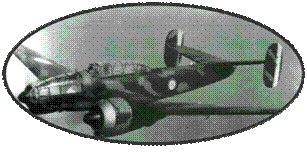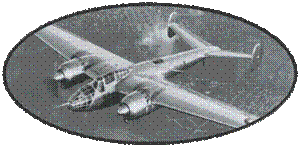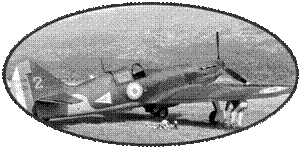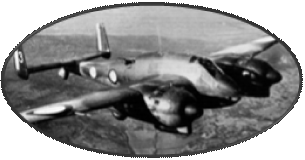The LeO-45 is studied
in order to respond to the B5 program launched in November1934.
The latter corresponds to a twin-engine bomber capable of reaching
400 km / h, and capable of carrying a ton of bombs over a distance
of 700 km. Meanwhile, the program evolves to become "B4" with
a crew reduced to 4 people. Subsequently, the maximum speed is
increased to 470 km / h. The first prototype made its first flight
on January 16, 1937 in Villacoublay. Equipped with Hispano-Suiza
AA engines of 1080 hp, this metal monoplane with low cantilever
wing could reach 465 km / h. The first tests reveal some defects
and lead to a series of modifications: the drifts are modified
to compensate for lateral instability at take-off, and the radiators
integrated in the leading edge, which are not very effective,
are moved towards the engine cowls. The weak point however remains
the engines.These are little reliable, with a perfectible cooling.
This defect is corrected by the adoption of modified cowls, and
the Hispano-Suiza engines will eventually be replaced by Gnome-Rhone
14N.
The unit resumed
its tests under the name of Leo-451 and a first order of 20 aircraft
was placed, followed by an additional request for 100 aircraft
to be delivered from the end of 1938. The manufacturing is distributed
between subcontractor's significant number and the deliveries
know unfortunately frequent delays in the French aircraft industry
of this time. The first series aircraft did not fly until March
1939 and an experimental squadron was set up in April 1939.
Two other orders
followed with 100 then 480 additional aircraft and the Air Force
began to collect its first LeO-451 from August 1939. However,
on a total order of 789 aircraft, only 10 units had been delivered
in September 1939. The "funny war" will be used to make more LeO-451.
Thus, on 10 May 1940, if 222 aircraft were manufactured, only
94 were in units.
The Bombardment
Groups planned to receive the new aircraft were withdrawn from
the front from the end of 1939 to be transformed. But delays accumulate
and some groups will continue to use the old Bloch MB200 alongside
the few LeO-451 available.
It is the GB I /
12 and II / 12 which realized the first missions from May 11th,
1940. The Leo-451 are used in particularly dangerous and inadequate
missions : without cover of fighter, they are thrown to low height
in the assault of the convoys of German troops strongly protected
by Flak. From June 16th onwards, some of the groups equipped with
LeO 451 are withdrawn to the AFN, the 11 remaining groups continuing
the fighting against Italy, recently returned to war. At the Armistice,
130 aircraft were lost in combat on the 452 manufactured, of which
only 373 delivered in units.
The aircraft present
in AFN or in the free zone, will be reused by the Vichy aviation
after the Armistice. The Leo-451s will participate in the Syrian
campaign in the summer of 1941, as well as various retaliation
missions, particularly to Gibraltar. These models will have an
ultimate evolution with the adoption of drift without stall and
the addition of a pairing of machine guns of 7.5mm on each side
of the cannon of 20mm in rear defense. In April 1941, the German
authorities authorized the government of Vichy to resume construction
of Leo 451, and 225 aircraft were ordered, of which only 109 would
be delivered before the dissolution of the Vichy Air Force in
November 1942.
During the invasion
of the southern zone by the Germans, more than 150 LeO-451 were
seized and delivered by the Germans to Italy or the Luftwaffe.
The Leo 451s present in North Africa pass to the service of the
allies, but worn out and outdated, they will soon be replaced
by more modern bombers, B26 or B25.













